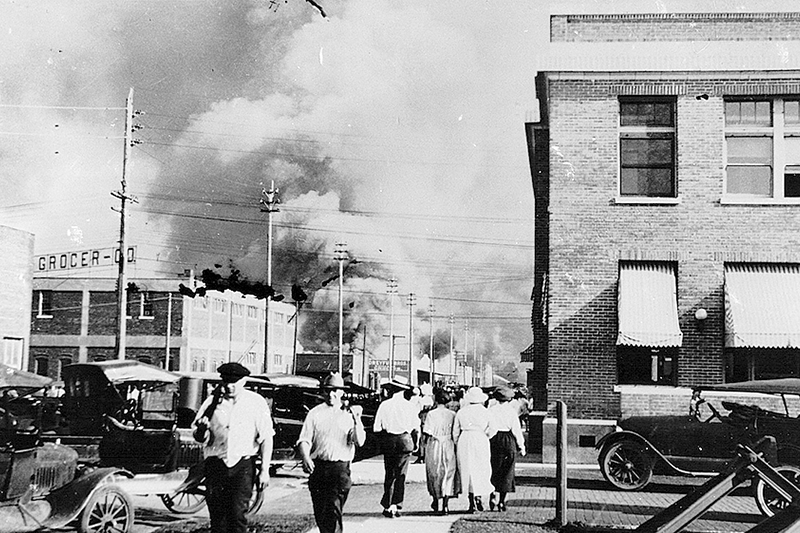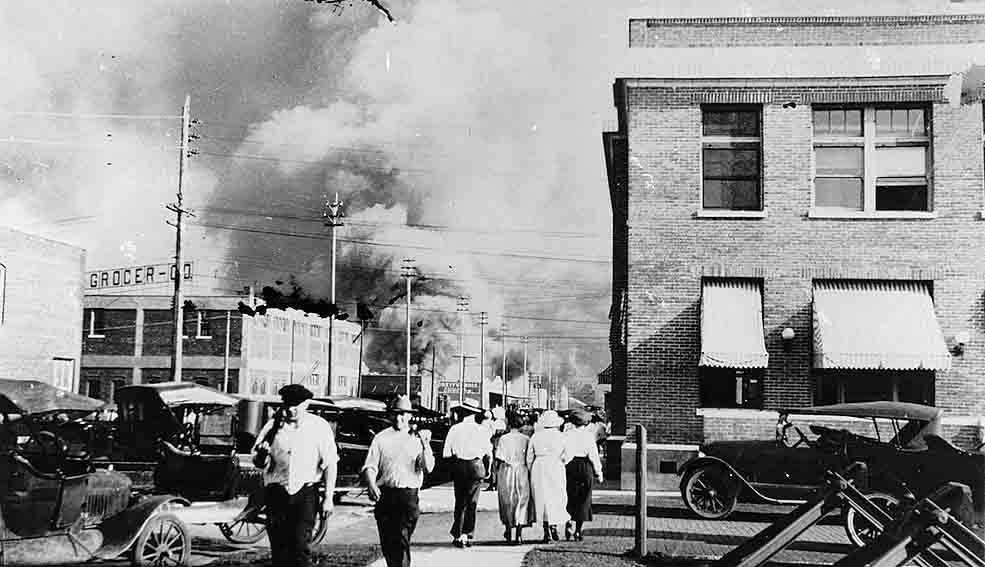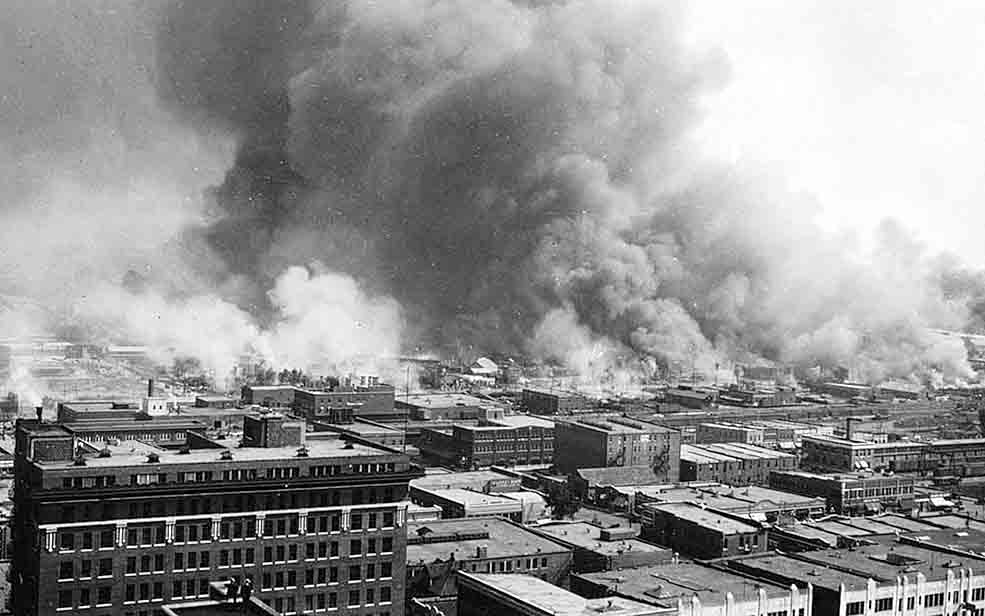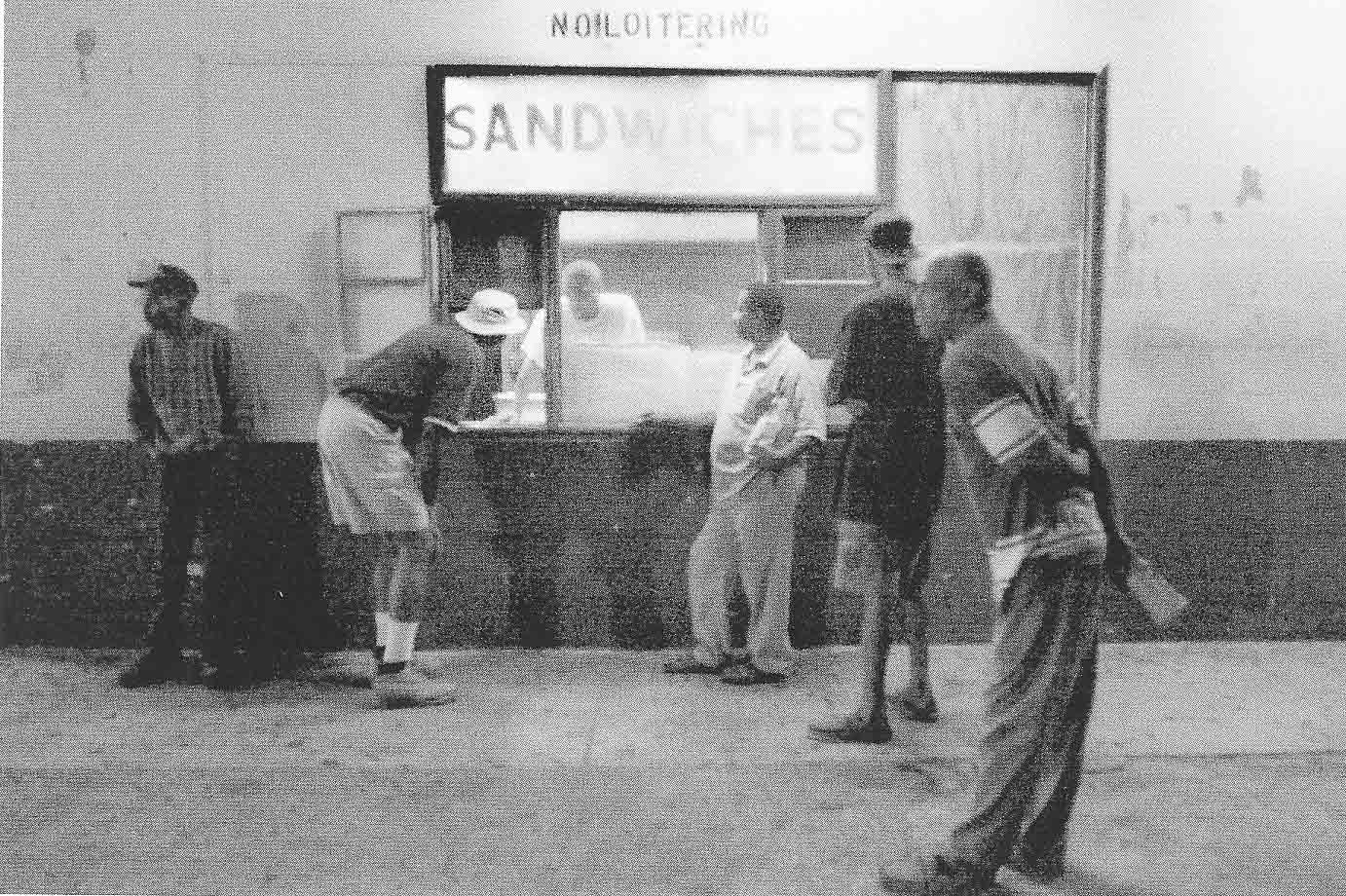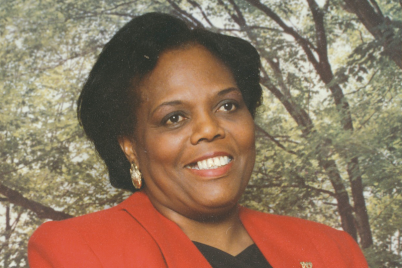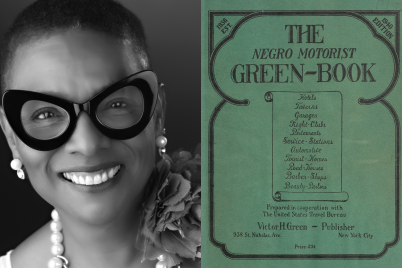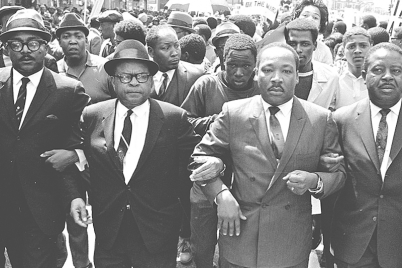The Greenwood District in Tulsa, Okla., grew into the most famous and prosperous black urban community in the United States of its time. As Greenwood advanced and flourished between 1889 through 1921, it became a symbol of black wealth, pride and unity.
It was there that African Americans invested their own money and developed their own financial institutions. Booker T. Washington called it the “Negro Wall Street” and some called it “Little Africa.”
“Black Wall Street,” however, was the name used to describe it as a dynamic economic center of progress that has endured in the pages of history as a legacy of success.
Word spread throughout the U.S. about the must-see most affluent all-black community in America, with a population of about 11,000. The Greenwood District boasted of having successful commercial structures, a three-story professional building, an excellent hospital, superior schools, an elegant movie theater and some of Tulsa’s most elegant brick homes.
In addition, Greenwood touted six black-owned private airplanes and even a community bus system. It was modern, magnificent and unapologetically all black.
During its heyday, well-known African-American personalities often visited Greenwood. Not only did Booker T. Washington and W.E.B. DuBois visit, so too did educator Mary McLeod Bethune, scientist George Washington Carver, opera singer Marian Anderson, chemist Perry Julian, blues singer Dinah Washington, just to name a few.
In spite of the progress and well-being of the Greenwood District and the overall community, on May 31, 1921, it was turned into ruin and ashes in what became known as the “Tulsa Riot of 1921.”
A story circulated that a young black man had assaulted a white woman—a repeated contrived agenda seen throughout this country’s history. Then there were rumors of a lynching—a purposeful spread of terror—and from there total chaos took control.
As whites and blacks armed themselves outside the Tulsa County Courthouse, a scuffle led to an exchange of gunfire and the beginning of America’s worst race riot. Greenwood was bombed from the air and burned to the ground by envious whites.
As day turned into night, the once thriving black mecca lay smoldering. Although accounts vary, the carnage left approximately 300 black men, women and children dead, including Dr. A. J. Jackson, who was considered the “most able Negro surgeon in America.” He was killed in front of his home by a white mob with guns acting as a militia.
Over 600 successful businesses were lost, homes were looted, countless black men were imprisoned, women were separated from their children and detained and over 9,000 residents were left homeless.
A model community to America and the world was destroyed within hours, and a major African-American economic movement had been resoundingly defused.
Jennifer Gamble-Theard, M.Ed. is a retired Pinellas County educator in the study of history and language. She is also the historian for the St. Petersburg Branch of ASALH.

